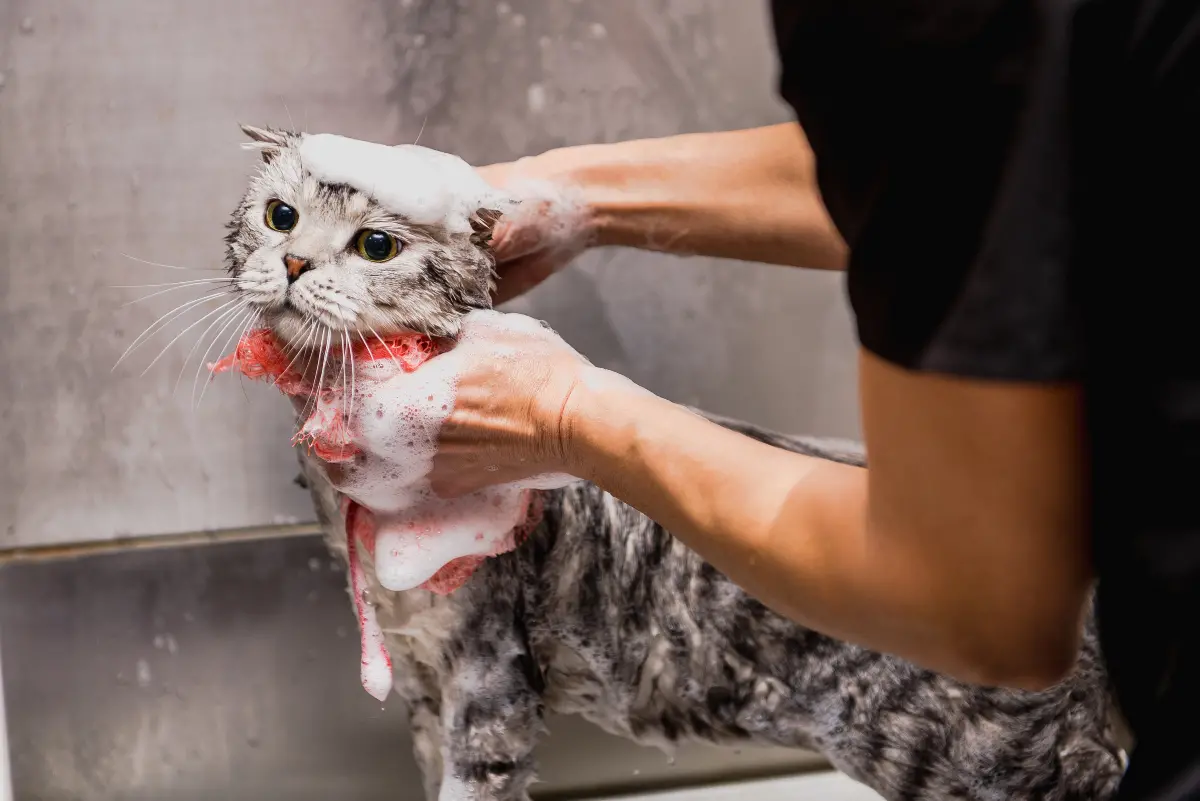
Cats are natural groomers, but sometimes they need a little help to stay clean and odour-free. Make DIY cat grooming simple and safe with these basic cat grooming tips.
If your cat is looking a little scraggly, then you might be considering making an appointment with a professional groomer.
Professional grooming is better for more challenging breeds and for cats with skin or coat issues, but there are a lot of easy cat grooming practices that you can learn to do yourself at home. It will save you a few bucks and will be less stressful than taking your cat to a stranger.
Where should you start? You can start by determining how and when your cats need to be groomed.
Do Cats Need to Be Groomed?
Cats spend an enormous amount of time grooming themselves. However, even with the best of care, some cats, such as Persians or other long-haired breeds, have a coat that they simply cannot maintain alone.
Even independent kitties need a little help sometimes. Cat grooming is essential but isn’t always an easy task if you don't know where to start.
Even though it's an alluring thought to have a professional handle your cat’s growing knots, there are benefits to learning to groom your cat at home.
-
- Grooming at home is less stressful for cats.
- You can groom in short sessions.
- Grooming can be a bonding experience for you and your cat.
- It's a lot cheaper!
- No appointments necessary
Felines easily become stressed at change. They don’t like to be taken to unknown places and have strangers handle them. Often the kindest and easiest thing you can do for your furry friend is to handle the chore yourself by investing in a few cat grooming essentials.
Also, think about the money you’ll save by grooming a cat at home. Cat groomers are rare, so they charge a premium price for their services. Dodo reports that the average range for a base feline groom session runs from $65 to $100 and can easily reach $250 if the cat’s fur has severe knots and mats.
Best Cat Grooming Supplies

Grooming cats not only takes patience but also supplies. At Homes Alive Pets, we offer many items to streamline the process and ensure success, so your cat has a positive experience.
Best Cat Grooming Brush
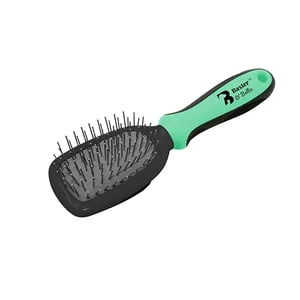
Check out the Baxter & Bella Pin & Bristle Brush designed specifically for your feline friend. It combines a bristle brush with a pin brush to effortlessly remove debris, loosen dead hair, and eliminate tangles. It also helps to smooth and redistribute oil throughout your cat's fur to give it a lovely shine.
Best Cat Comb
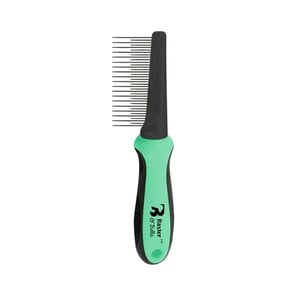 Having a cat comb to work out the knots in your cat’s fur is essential. The Baxter & Bella Shedding Comb for Long-Haired Cats has metal teeth that vary in length to loosen hair and remove tangles. It helps to lift the cat’s shedding undercoat for easy removal. You can easily hold the comb with its ergonomic handle with a non-slip grip.
Having a cat comb to work out the knots in your cat’s fur is essential. The Baxter & Bella Shedding Comb for Long-Haired Cats has metal teeth that vary in length to loosen hair and remove tangles. It helps to lift the cat’s shedding undercoat for easy removal. You can easily hold the comb with its ergonomic handle with a non-slip grip.
Best Cat Deshedding Brush
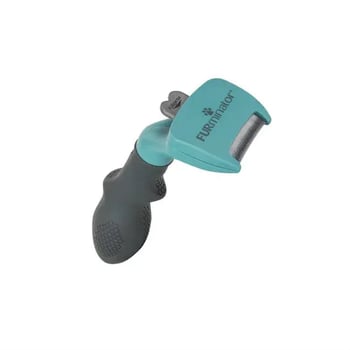 The Cat Furminator Deshedding Tool can reduce your cat’s shedding by as much as 90% by removing the loose hair and undercoat.
The Cat Furminator Deshedding Tool can reduce your cat’s shedding by as much as 90% by removing the loose hair and undercoat.
Best Cat Shampoo and Conditioner
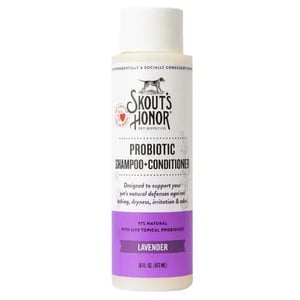
For a great-smelling bathing option, check out Skout's Honor Probiotic Shampoo & Conditioner for Dogs & Cats - Lavender. The two-in-one shampoo and conditioner by Skout’s Honor uses a combination of kefir culture and avocado to help soothe and relieve dryness, hot spots, shedding, and odours. It is a tear-free solution that is free of triclosan, sulfates, petrolatum, DEA, parabens, and harmful dyes.
Best Pet Wipes

The Earthbath Cat Grooming Wipes are an ideal way to clean your cat between baths or if your kitty simply objects to a bath. They wipe away odours, dirt, and loose hair with ease and are even fragrance-free, making them gentle on even the most sensitive cat skin.
Sometimes the areas that need spot cleaning are the areas that are most difficult for your cat to clean on their own. You can easily clean tear stains with pet-safe eye wipes, or improve your cat's dental routine with cat oral wipes.
Best Waterless Cat Shampoo
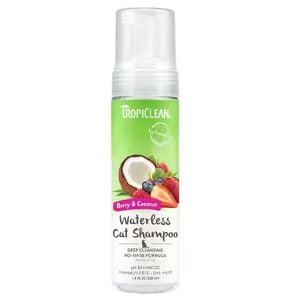
If your cat simply refuses to get wet in a conventional bath then you’ll need to turn to other options, such as waterless shampoo. Tropiclean Waterless Bath for Cats is a specialized bathing solution that keeps your cat fresh without water.
There is no need to rinse either. Simply apply the waterless shampoo to clean your cat's fur and leave a calming scent. The pet’s fur will feel soft and look shiny.
Towels
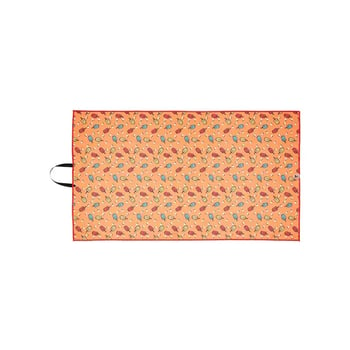 When grooming a cat it’s a good idea to have a towel to dry off the wet animal or to wrap your furry friend in. A cat wrapped snugly in a towel is a little like bundling a newborn baby. It provides the animal with a sense of comfort and also prevents the cat from clawing you.
When grooming a cat it’s a good idea to have a towel to dry off the wet animal or to wrap your furry friend in. A cat wrapped snugly in a towel is a little like bundling a newborn baby. It provides the animal with a sense of comfort and also prevents the cat from clawing you.
The BRB Pets HydroPET Towel is a highly absorbent option suitable for quickly drying off your wet kitty. Most cats hate being wet, so drying them off promptly after bathing will make the whole process less stressful. Of course, you can just use a clean towel that you have at home in a pinch.
Best Cat Nail Clippers
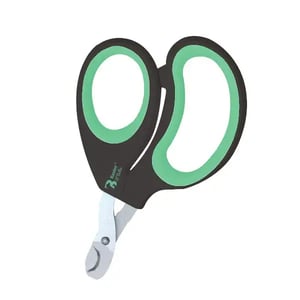
When grooming your furry friend, you’ll also want to remember to cut the cat’s nails. It’s true that cats claw things to keep their nails trim and sharp. However, if you don't want your cat to claw your furniture or rugs, then you might want to consider cutting feline nails when grooming the cat.
Baxter & Bella Nail Clippers for Cats is a stainless steel clipper designed for a cat’s nails. It makes a quick cut so you can easily trim the cat’s nails without upsetting or scaring the pet. If you feel squeamish about cutting your cat’s nails then try the JW Gripsoft Palm Nail Grinder for Pets to gently grind off the tip of the nail.
Learn more about cat nail care in How to Cut Cat Nails At Home.
Best Feline Oral Care Supplies

Maintaining your cat’s oral health is a part of any cat grooming session. You’ll want to invest in the Tropiclean Fresh Breath Oral Care Kit for Cats, which includes everything you need to keep your cat’s teeth pearly white.
The kit includes a Tripleflex toothbrush for 360-degree brushing, a finger brush, and Tropiclean Fresh Breath brushing gel to kill germs, remove plaque, and keep your cat’s breath smelling nice.
Cat Grooming Tips

Every cat is different, so your at-home cat grooming routine will depend on your individual cat's needs. Some grooming routines can be done frequently and can help to maintain healthy skin and coat, like brushing your cat's fur.
Other cat grooming practices should be done less often, like bathing or cat haircuts, and some cats don't require this type of grooming at all. Avoid unnecessarily grooming your cat. Try to remember that your cat usually does a pretty good job of bathing herself.
Some types of cat grooming take some practice to get comfortable with. Trimming your cat's nails might seem overwhelming if you've never done it before, so make sure you check out the tips below before you get started.
The more consistent you are with your cat's grooming maintenance routines, the less challenging they will become. Let’s explore a few of the main cat grooming tips so you can take on the task as a DIY whenever needed.
How to Brush a Cat
Brushing your cat is one of the easiest and often the least stressful grooming practices that you should try. Cats usually do a good job of self-grooming, but regular brushing can help to prevent tangles and mats and remove loose fur.
You might not think this is necessary if your cat is an avid groomer, but brushing your cat can help to reduce hairballs, which is something that all cat owners can appreciate. Here are a few tips for brushing your cat:
Time and Place are Important
You want your cat to be comfortable and relaxed before you start. Pick a time when your cat is feeling tired and wants to be pampered. Sit down next to your cat or hold the pet in your lap.
Cats that are a little more squirmy or nervous about getting brushed may feel more comfortable lying on their own bed or a favourite spot in the house. Try to avoid high-traffic areas of the home too. Aim for quiet and calm spots.
Look for and Remove Knots and Tangles
Before you get into a full-body brushing, check your cat for problem spots like tangles or mats. Run a soft slicker brush gently through the cat's hair to look for spots that might need more attention.
If you find knots, a cat comb can be used to gently untangle them. Start at the tips of the hair and work downward towards the skin to loosen the knot. You can also use your fingers to untangle small portions of the knot.
Brush to Remove Loose Fur
Once all the major tangles are out, take some time and brush your cat's entire body. Always brush the way the coat grows. Start brushing the neck area and then slowly make your way toward the cat’s tail.
This full-body brushing will help to remove loose fur and smooth your cat's coat. Daily brushing is recommended for long-haired cats to prevent tangles. Short-haired cats can still benefit from weekly brushing sessions.
Check Your Cat's Skin
The act of combing and brushing your cat not only solidifies the bond between you and your furry friend but is also an opportunity for a health checkup. You should feel for any sensitive areas on your cat, any bumps, or areas of lost fur.
Felines are notorious for hiding any discomfort, so paying attention to your cat’s body and reactions during grooming is a great way to keep an eye on your pet’s coat.
How to Bathe Your Cat
Sometimes brushing your cat just isn’t enough. Cats, especially kittens, can get messy, and that might just call for a bath. Most cats are not a fan of baths or water, but sometimes it's necessary.
Bathing your cat takes a little finesse, coordination and a lot of patience. With these tips, you can safely deep clean your messy kitty without traumatizing her too much. Here are some simple tips for bathing your cat:
Brush First
Always make sure your cat has been thoroughly brushed before bathing. A slicker brush for cats will remove loose fur and dirt from your cat's coat, making sure their bath is more effective. Make sure to get out any knots or mats before getting them wet.
Draw Your Cat A Bath
You might be tempted to fill the sink or bathtub with warm water and place your furry friend into the depths. However, this can terrify a cat. Instead of submerging your kitty. Try to gently pour warm water over your cat’s fur.
Take things slow and offer lots of encouragement. Treats or a lick mat can help to encourage her to stay still and will help her associate something yummy and fun with bath time.
Scrub A Dub Dub
When your cat’s fur feels moist to the touch, then it's time to use cat shampoo. Ideally, you should invest in an all-in-one cat shampoo and conditioner combo and something with gentle and natural ingredients that won't irritate your cat's skin.
Apply the shampoo to your hand and create a lather. Gently massage the shampoo into your cat's fur, avoiding your cat's face and ears. Don't forget to gently scrub under her arms and in between her toes.
Once your cat is thoroughly scrubbed, rinse them really well. Make sure to not leave any soap in your cat's fur that she might ingest later when grooming herself.
Dry Time
Wrap your furry friend tightly in a fluffy towel. Most cats feel secure with a towel tightly wrapped around them, and it’s a great way to help dry your cat’s fur.
Most felines will object to a noisy blow dryer, so you’ll just want to get your kitty’s fur as dry as possible with the towel.
Don't Force It
If your cat simply refuses to let you bathe using water, then we encourage you to invest in a waterless cat shampoo or some pet wipes. These waterless bathing options can be less stressful and are ideal for spot cleaning and smaller messes.
How to Clean Your Cat's Teeth

Grooming a cat also consists of taking care of your furry friend’s oral and dental health. Cat teeth cleaning is the most forgotten grooming habit, so make sure to add this to your weekly cat grooming schedule.
Food debris and bacteria collect in your cat's mouth, leading to bad breath in the short term, and could lead to serious dental issues in the long term. Here are a few ways to care for your cat's dental health:
Brush Your Cat's Teeth
There are many ways to help freshen your cat's breath, eliminate bacteria and prevent feline dental disease, but the best and most effective method to keep your cat's mouth clean is toothbrushing.
You can purchase a feline toothbrush and toothpaste to eliminate plaque and tartar buildup on your cat’s teeth, which leads to gum disease and tooth loss if not regularly removed.
Check out How to Brush Your Cat's Teeth for more tips and tricks to get your cat used to this important grooming habit.
Try Food and Water Additives
Sometimes using a hands-off approach can help to enhance your cat's dental routine. Special food and water additives designed to remove bacteria and scrape away plaque build-up can make cleaning your cat's teeth a lot more effective.
Let Your Cat Chew
Natural chews are another great way to help your cat keep her teeth clean. Small natural chews like chicken feet or necks, salmon skins, or rabbit ears can help your cat chew away stuck on bacteria and food debris.
Not all cats are used to chewing, so it might take some time and encouragement to get them used to it. Choose flavours that your cat loves, and always monitor them the entire time they are chewing.
Finding proper chews for cats is easier than you might think. Check out Best Dental Chews for Cats to learn which natural chews are safest and most effective for improving your cat's dental health.
How to Trim Your Cat's Nails
Part of grooming cats is taking care of their toenails. If you keep their nails trimmed, then they are less likely to damage your home’s furnishings.
Try to trim your kitty’s nails while they nap. Most cats sleep 20 hours out of 24 per day, so catching your cat snoozing isn’t that difficult.
Gently grasp your cat’s paw in your hand. Use your finger and thumb to press the top and bottom of the paw near the joint that sits behind each claw. The claw will automatically extend, and you can quickly snip the tiny tip of the nail off.
Do not cut anything more than the tip, or you could hit your cat's quick, which is painful and will cause bleeding. Most cats will tolerate having their nails clipped.
Some pet owners opt to use a grinding tool to grind off the tip of the cat’s nail, but many kitties are afraid of the noise of the tool.
Do Cats Need Haircuts?

Your cat's fur is designed to protect them. It insulates them and helps them maintain a healthy body temperature. Regular grooming can help to maintain their beautiful coat, but do cats need haircuts?
Some circumstances require some trimming. Cats who are having surgery or other medical procedures may need a part of their body shaved, while other cats just need some trims to make their lives easier.
Many long-hair cats can benefit from having their paw fur trimmed, for example. Trimming the long fur around the paws will reduce messes and tracking from their litter box. It can also make it easier to keep their nails trimmed.
Minor trimming can be done at home, but make sure you have a good and safe pair of grooming scissors. Make sure you know what is safe to cut, too. For example, you should never ever cut your cat's whiskers because they use these to sense their surroundings.
Best Cat Haircuts
For more full-body cuts, it's best to talk to a professional first. Not all cats should get haircuts, and a professional groomer will help you determine the safest options for your cat. If you decide to take your pets to a professional groomer, then you’ll have the choice of grooming styles for your cats.
Popular grooming styles include:
-
- Lion Cut: The cat’s hair is shaved close to the body, but the fur is left long on the shoulders, legs, end of the tail, and head. Your cat will look like a lion when complete. This style is ideal for long-haired cats who regularly mat.
- Comb Cut: This cut is similar to a lion cut, but the fur is left longer. The goal is to keep the fur short enough to reduce matting and shedding.
- Belly Shave: The belly hair on long-haired cats tangles and knots easily since your cat spends so much time sleeping and napping. Shaving the belly hair close to the skin reduces the likelihood of mats.
- Panther Cut: All hair is trimmed except that on the cat’s head and legs.
- Kitten Clip: The kitten clip turns a long-haired cat into a shorthaired cat by cutting the fur to a shorter length. Shortening the hair can cut down on mats and tangles in some cat breeds.
- Sanitary Clip: This clip only focuses on removing hair around the genitals. It is ideal for senior or elderly cats who often struggle to keep the area clean.
Please note that not all cats need haircuts, and some cats shouldn't get haircuts. Talk to your groomer or vet about whether it's safe to trim your cat's fur!
FAQs About Cat Grooming

How often should I give my cat a bath?
Many cats will benefit from a bath every four to six weeks. However, a cat that grooms himself well might be fine to go longer between baths.
Do indoor cats need a bath?
Many indoor cats do not require bathing. They can effectively keep themselves clean and smell-free. This is especially true if you have more than one cat. Two cats grooming each other can actually prove beneficial. They will keep each other looking pristine, which will reduce your task of kitty grooming.
How often is too often to bathe a cat?
Many cats aren’t used to water and have never been bathed. Others have been bathed on occasion. Your cat’s skin isn’t used to being frequently bathed and can quickly become dry. Ideally, bathe your cats only every four to six weeks to maintain the cat’s skin health.
How often should I trim my cat's nails?
Trimming your cat’s nails is a part of the grooming process. Most cats’ nails need to be trimmed every two to three months. If you provide your cat with a scratching post, then you might not need to trim the nails as frequently if your cat regularly uses the scratching post.
How do you dry a cat after a bath?
Use a large towel to dry your cat’s fur after bathing. The towel will also help keep the pet warm until the fur has a chance to dry. The towel offers security. Some cats will tolerate being blown dry with a hair dryer on a low setting, but not all cats will put up with it.
Be Careful not to Overgroom Your Cat

Cats are natural groomers, and while there are some regular grooming habits that they need help with, try not to go overboard. Most cats will shed no matter how often you brush them. Over-brushing, over-bathing, and over-trimming them can lead to skin and coat issues in cats.
Daily brushing is suitable for most cats to de-tangle and remove loose fur, but de-shedding tools should be used less frequently. Deshedding your cat once a week is plenty to remove damaged fur.
Cats do most of their bathing on their own, so bathing your cat should be done only as needed. Try to limit baths to no more than once every 6-8 weeks to help protect the natural oils on your cat's skin.
.png?width=200&height=66&name=logo%20(1).png)







